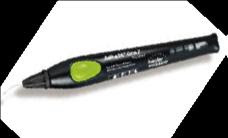 As previously announced, the BSDR Conference is taking place in Glasgow. The Santini Miletic Research Group presented a study entitled "The ratio of carbon-carbon double bonds in different BisGMA/HEMA mixtures". Click on the image.
As previously announced, the BSDR Conference is taking place in Glasgow. The Santini Miletic Research Group presented a study entitled "The ratio of carbon-carbon double bonds in different BisGMA/HEMA mixtures". Click on the image.Prior to the poster session, I attended the Ceramics session chaired by professor Richard Van Noort. Several very interesting studies were presented regarding CAD-CAM ceramic strength, ceramic reinforcements, fluoride-containing bioactive glasses, leucite glass-ceramic crystallisation, coating materials for zirconia ceramics and wear quantification using profilometry. It was quite impressive to see the very high standard of research carried out at various universities in the UK.
Sponsored by 3M ESPE, the Dental Materials Group Symposium was held during the afternoon session. After the opening remarks by Dr Garry Fleming and Professor R. Van Noort, lectures were given by Dr Rainer Guggenberger (The chemistry of new resin systems), Professor David Watts (The measurement of shrinkage and contraction stress), Professor Tim Watson (The quality of adhesion) and Professor Trevor Burke (Early thoughts of clinical experience using the novel silorane-based composite material). The lectures increased our knowledge on various aspects of resin-based composites and the silorane-based material in particular. The 'non-shrink' resin composites are still not a reality but dental technology has made substantial improvements towards this goal.
















